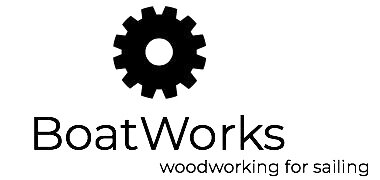Compass mount
Yet again Louve is inheriting an idea I had for Meritaten but did not manage to implement. This time it’s a compass mount. I renovated this compass a few years ago, with a thought to have it as a main steering compass in the cockpit. It never happened on Meritaten.
I like how Geoff Kerr built in compass in aft thwart on his boat. On my Louve I have this thwart removable so my compass needs separate mount. I patterned it with cardboard and came out with a keyhole-like structure.
Cut out from thin plywood to act as a template for several layers of glued plywood.
Encapsulated in epoxy and several coats of varnish it was ready for mounting. It will be detachable (in case I decide it takes too much space in the cockpit) and mounted with two bolts, under the aft thwart.
Compass mount was modified with additional screws which will hold it inside the plywood envelope. I drilled and tapped existing extrusions.
Mounted inside plywood fixture. Aft thwart removed.
With thwart in place - for sailing - the compass is still visible and easy to read, even when I sit on sole boards.
I will test if it’s not in the way while sailing but for now it looks good!
Before brushing the second coat of Owatrol D2 I install centerboard cleat. According to plans there should be 400mm wide cleat which will hold bungee cord. I substitute it with standalone bronze hooks. This way I have space left for intermediate centerboard positions if I find it useful.
Aft hatch needs some way of holding it closed. I had these locks which I planned to install on Meritaten (again - it didn’t happen). They were too long for Louve so I modified them.
Top one shortened by 15mm. Bottom one as original.
Mounted on Louve - they do the job!
Next step is to finish varnishing/painting spars and launching!

